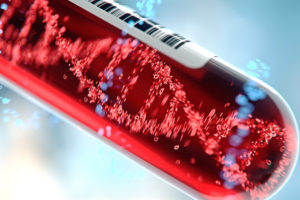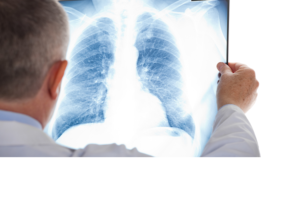Squamous Cell Carcinoma (SCC) Lung Samples
Bay Biosciences provides high quality, clinical grade, lung squamous cell carcinoma (SCC) fresh frozen tumor tissue samples, FFPE tumor tissue blocks, normal adjacent tissue bio-specimens, and matched cryogenically preserved sera (serum), plasma, peripheral blood mononuclear cells (PBMC) and bronchoalveolar lavage fluid (BAL) biofluid samples from patients diagnosed with squamous cell carcinoma (SCC) of the lung.
The sera (serum), plasma and PBMC biofluid specimens are processed from non-small cell lung carcinoma (NSCLC), subtype squamous cell carcinoma (SCC) patient’s peripheral whole-blood using customized collection and processing protocols. The squamous cell carcinoma (SCC), non-small cell lung carcinoma (NSCLC) biopsy tumor tissue, normal adjacent tissue and matched biofluid samples are collected from unique patients diagnosed with stage III and IV non-small cell lung carcinoma (NSCLC), subtype squamous cell carcinoma (SCC) and are provided to a valued pharmaceutical customer for research, diagnostics, discovery and drug development.
Detailed clinical data, lung squamous cell carcinoma (SCC) patient’s history, symptoms, complete blood count (CBC), serology, MRI, biopsy tumor tissue, histopathology information, elevated biomarker levels, genetic and metabolic information associated with squamous cell carcinoma specimens is provided to a valued customer for research, development and drug discovery.
The squamous cell carcinoma (SCC) sera (serum), plasma and peripheral blood mononuclear cells (PBMC) biofluids are processed from patients peripheral whole-blood using customized collection and processing protocols.

Squamous Cell Carcinoma (SCC) of the Lung Overview
Squamous cell carcinoma (SCC) of the lung, also known as epidermoid carcinoma, is a form of lung cancer. There are two main types of lung cancers: small cell lung cancer (SCLC) and non-small cell lung cancer (NSCLC). Squamous cell carcinoma is a subtype of non-small cell carcinoma. Squamous cell carcinoma (SCC) is the most common type of lung cancer in men, and it’s more common in men than in women. It is mostly caused by smoking tobacco.
Squamous cell carcinoma is named after squamous cells, which are types of cells that are flat and thin and look like fish scales. They’re found in many different parts of the body. A squamous cell carcinoma can develop anywhere in the body where squamous cells are located.
Squamous cell carcinoma usually begins in the bronchi (the passages that bring air into the lung) and grows more slowly than other main forms of lung cancer, which include adenocarcinoma and small cell lung cancer.
- Adenocarcinoma begins along the outer edges of the lungs and under the lining of the bronchi in secretory (glandular) cells. It is the most common type of lung cancer in patients who have never smoked.
- Small-cell lung cancer grows rapidly and quickly spreads to other organs.
Following are the four main types of squamous cell carcinomas (SCC) of the lung:
- Papillary Carcinoma
- Small cell Carcinoma
- Clear cell Carcinoma
- Basaloid Carcinoma
Usually basaloid and certain small-cell types of cancers may have a worse prognosis than other types of squamous cell carcinoma.

Signs and Symptoms of Squamous Cell Carcinoma (SCC) of the Lung
Signs and symptoms of squamous cell carcinoma are similar to signs and symptoms of other types of lung cancer. Usually lung cancer does not usually cause symptoms at first. Symptoms usually begin after cancer has spread (metastasized). Symptoms may vary from patient to patient.
Following are some the most common signs and symptoms of lung cancer include:
- Shortness of breath
- Persistent chest pain
- Pain and weakness in the shoulder, arm, or hand
- Fever
- Wheezing
- Recurring lung infections like pneumonia or bronchitis
- Bloody or rust colored sputum (coughed up mucus)
- Hoarseness of the throat
- Swelling of the neck and face
Squamous cell carcinoma of the lung can also have symptoms similar to other cancers in general, such as:
- Fatigue (extreme tiredness)
- Loss of appetite
- Unexplained weight loss
- Headache
- Pain all over the body
- Broken or fractured bones
Risk Factors of Squamous Cell Carcinoma (SCC) of the Lung
Squamous cell carcinoma (SCC) of the lung is strongly related to patients history of tobacco smoking. SCC’s are more closely associated with tobacco smoking than other forms of lung cancer.
Following are several common factors that increases the risk of developing squamous cell carcinoma (SCC):
- Exposure to secondhand smoke
- Marijuana smoke
- Recurring lung inflammation from conditions like pneumonia or tuberculosis
- Exposure to certain chemicals like asbestos, talcum powder, gasoline, or arsenic
- Radon (a naturally occurring gas that has no smell, taste, or see)
- Air pollution
Diagnosis of Squamous Cell Carcinoma (SCC) of the Lung
Following diagnostics tests are performed for the diagnosis of squamous cell carcinoma (SCC):
- CT scans: CT scans show lesions that may not be detected on an x-ray
- X-rays: X-rays can show a tumor in the lungs
- Sputum cytology: In this test mucus is used from coughing to see if there are cancerous cells
- Bronchoscopy: In this test the lungs are examined using a lighted tube that’s passed down the throat and into the lungs
- Mediastinoscopy: In this test a doctor may make an incision in the neck and surgically remove a tissue samples from lymph nodes
- Needle biopsy: In this test a doctor will inserts a needle through the chest wall and into the lungs to take cell samples for evaluation
- Biopsy: A small tumor tissue sample, a lymph nodes or other areas are taken for examination to see where the cancer could have spread
After the test results are available, your doctor will carefully analyze your imaging test results and tissue samples findings to assess if you have squamous cell carcinoma or another form of lung cancer. Most patients with early stage squamous cell carcinoma don’t usually have signs and symptoms, and the cancerous cells can’t be seen on an x-ray. It tends to spread outside the chest area more slowly (and later) than other major types of lung cancer. When doctors examine a biopsy, tumor’s from squamous cell carcinoma can range from well-differentiated to showing only minimal squamous cell features.
Once doctors find out what kind of lung cancer you have, they will try to find out how advanced your cancer is and at what stage it’s at, and whether it’s spread beyond the lungs. The stages of lung cancer range from stage 0 to stage IV, with the lower stages indicating cancer that is limited to the lung and stage IV indicating the cancer has spread to other parts of the body. Knowing the stage will help your doctor determine the right treatment options.
Following additional tests are performed to determine the stage of the cancer:
- CT scans
- MRI
- Positron emission tomography (PET), which is an imaging test that shows how your organs and tissues are functioning using a radioactive drug
- Bone scans
Treatment of Squamous Cell Carcinoma (SCC) of the Lung
Treatment plans for lung cancer depends on the type of lung cancer you have, the stage of the lung cancer, and your overall health and preferences. You may receive one type of treatment or a combination of multiple types of treatment. The most common treatments for lung cancer are surgery, chemotherapy and radiation therapy.
SURGERY
Lung cancer surgery involves removing cancer from your lungs, your doctor may decide surgery is right for you.
Following are the three types of surgery commonly used to treat lung cancer:
- Segmentectomy or wedge resection, in which a small part of the lung is surgically removed
- Lobectomy, in which one or two lobes of the lung are surgically removed
- Pneumonectomy, in which an entire lung is surgically removed
RADIATION THERAPY
Radiation therapy sends high-energy beams of radiation to shrink cancer cells and destroy tumors. It may be used in combination with surgery or chemotherapy. There are two types of radiation therapy, sometimes, both types are used to treat lung cancer.
CHEMOTHERAPY
Chemotherapy treatments are drugs that can kill cancer. Chemotherapy drugs stop cancerous cells from being able to grow and reproduce. Chemotherapy may be used alone or along with radiation therapy or surgery.
OTHER LUNG CANCER TREATMENTS
Following are some of the other treatments for used for lung cancer patients:
- Photodynamic therapy (PDT), otherwise known as laser therapy, which is a type of cancer treatment that targets cancerous cells
- Targeted therapies are medications that block blood vessels in new tumors to stop them from growing

Bay Biosciences is a global leader in providing researchers with high quality, clinical grade, fully characterized human tissue samples, bio-specimens and human bio-fluid collections from cancer (tumor) tissue, cancer serum, cancer plasma cancer PBMC and human tissue samples from most other therapeutic areas and diseases.
Bay Biosciences maintains and manages it’s own bio-repository, human tissue bank (biobank) consisting of thousands of diseased samples (specimens) and from normal healthy donors available in all formats and types. Our biobank procures and stores fully consented, deidentified and institutional review boards (IRB) approved human tissue samples and matched controls.
All our human human tissue collections, human specimens and human bio-fluids are provided with detailed samples associated patient’s clinical data. This critical patient’s clinical data includes information relating to their past and current disease, treatment history, lifestyle choices, biomarkers and genetic information. Patient’s data is extremely valuable for researchers and is used to help identify new effective treatments (drug discovery & development) in oncology, other therapeutic areas and diseases. This clinical information is critical to demonstrate their impact, monitor the safety of medicines, testing & diagnostics, and generate new knowledge about the causes of disease and illness.
Bay Biosciences banks wide variety of human tissue samples and biological samples including cryogenically preserved -80°C, fresh, fresh frozen tissue samples, tumor tissue samples, FFPE’s, tissue slides, with matching human bio-fluids, whole blood and blood derived products such as serum, plasma and PBMC’s.
Bay Biosciences is a global leader in collecting and providing human tissue samples according to the researchers specified requirements and customized, tailor made collection protocols. Please contact us anytime to discuss your special research projects and customized human tissue sample requirements.
Bay Biosciences provides human tissue samples (human specimens) from diseased and normal healthy donors; including peripheral whole-blood, amniotic fluid, bronchoalveolar lavage fluid (BAL), sputum, pleural effusion, cerebrospinal fluid (CSF), serum (sera), plasma, peripheral blood mononuclear cells (PBMC’s), saliva, Buffy coat, urine, stool samples, aqueous humor, vitreous humor, kidney stones, renal calculi, nephrolithiasis, urolithiasis and other bodily fluids from most diseases including cancer. We can also procure most human bio-specimens and can do special collections and requests of human samples that are difficult to find. All our human tissue samples are procured through IRB approved clinical protocols and procedures.
In addition to the standard processing protocols Bay Biosciences can also provide human plasma, serum, PBMC bio-fluid samples using custom processing protocols, you can buy donor specific sample collections in higher volumes and specified sample aliquoting from us. Bay Biosciences also provides human samples from normal healthy donors, volunteers, for controls and clinical research, contact us Now.
日本のお客様は、ベイバイオサイエンスジャパンBay Biosciences Japanまたはhttp://baybiosciences-jp.com/contact/までご連絡ください。



